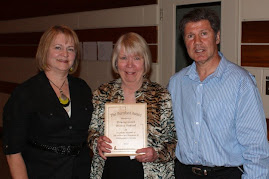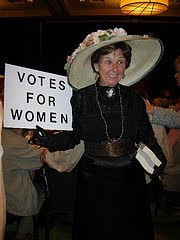Tuesday, August 7, 2018
Canada's best reviewer, the marvellous Margie Taylor, has done it again. Here she tackles a novel by Paulo Coelho, Veronika Decides to Die. (A great title and almost as good as my favourite title Margo Moves the Furniture.) Coelho is a popular writer with a large fan following. His early life was strange but Margie lays it all out for us. (self disclosure. I tried a Coelho novel once and could not suspend my disbelief.)
In 1999,
Paulo Coelho wrote an essay for the London Telegraph Review in which he
discussed he time he spent in mental institutions in the 1960s, during Brazil’s
military dictatorship. At the time, he wrote, “the word ‘artist’ was synonymous
with homosexual, communist, drug addict, and layabout.” Coelho, who was 18, had
artistic aspirations; not knowing where to begin, he joined an amateur
theatrical group and began experimenting with drugs and radical politics. When
his parents realized this was more than a passing phase – that he was not
following the career path they had laid out for him – they had him admitted to
a psychiatric hospital, “for his own good”.
“And thus
began my journey through various psychiatric hospitals. I was admitted, I was
given all kinds of different treatments, and I ran away at the first
opportunity, traveling around for as long as I could bear it then going back to
my parents’ house. We enjoyed a kind of honeymoon period, but after a
while I again started to get into what my family called ‘bad company,’ and the
nurses reappeared.”
His
mother and father were not monsters; Coelho makes it clear they acted out of
love for their son, and in later years never forgave themselves for having him
committed. But the three years he spent in and out of Rio de Janeiro’s Dr Eiras
Sanatorium provided the inspiration for Veronika Decides to Die, his 1998 novel
which, like his other books, was a New York Times best seller and has been
translated into dozens of languages. The theme of the book is madness – what is
it, and who are the madmen, and women? Madness, he concludes, is the name we
give to those who refuse to conform. And the real madmen – and women – are the
ones who hide their differences within a facade of normality.
At this
point I think I need to self-disclose: I’m not a fan of new-age homilies
disguised as novels. When I pick up a book that’s trying to send me a
“message”, I get prickly. If I want to be preached at, I’ll go to church. I’m
probably one of the few people who has yet to read The Alchemist,
Coelho’s inspirational fable about a Spanish shepherd boy who travels to the
pyramids of Egypt in search of a treasure – just seeing the word
“inspirational” on the cover puts me off.
Having said
that, I didn’t absolutely hate this book. (Second self-disclosure: a reader on
Amazon.com once started her review of my novel, Displaced Persons, with
those words. Safe to say, I read no further.) Veronika Decides to Die is
set in Ljubljana, the capital of Slovenia, a few years after the break-up of
Yugoslavia. Veronika, a 24-year-old librarian, is smart, educated, attractive,
and has had her share of lovers. However, she sees no point in continuing to
live, with death waiting for her at the end of a long, meaningless life. And so
she decides to kill herself.
She
swallows a large dose of sleeping pills and wakes up in Villete, a notorious
psychiatric hospital established a few years earlier in an abandoned army
barracks. The doctor informs her that she has damaged her heart and will be
dead within a week. Hearing this, Viktoria begins to have some regrets for
trying to kill herself. At first she’s intimidated and rather frightened by the
other inmates, but gradually she becomes intimate with three of them – Zedka,
Mari, and Eduard. Her interactions with these three lead her to question what
it means to be crazy.
Zedka,
who has a loving family but cannot shake the image of a past lover, is being
treated for depression. She says insanity is the inability to communicate your
ideas:
“It’s as
if you were in a foreign country, able to see and understand everything that’s
going on around you but incapable of explaining what you need to know or of
being helped, because you don’t understand the language they speak there.’
‘We’ve all felt that.’ ‘And all of us, one way or another, are insane.’”
Mari, a
wife, mother, and successful lawyer, has chosen insanity as an escape from an
unbearable present. For years she’s suffered from devastating panic attacks.
When her husband can no longer care for her, she enters Villete and is treated
for depression. When she learns she’s been asked to resign from her law firm,
she asks the doctor to keep her in the asylum, insisting she’s not cured. Older
and wiser than Veronika, Mari talks openly about sexual pleasure and
masturbation. She advises Veronika to spend what little time she has left
discovering her true sexuality. “Even if you have only two days to live,” she
says, “I don’t think you should leave this life without knowing how far you can
go.”
Eduard,
the son of rich and powerful parents, is being treated for schizophrenia. We
learn that he, like Coelho, developed a passion to become an artist. He began
to fill the house with strange people, “all of them badly dressed and with untidy
hair, who listened to horrible music at full blast – endlessly drinking and
smoking and showing a complete disregard for basic good manners.” Pressured by
his parents to bury his ambitions, he lost touch with reality and was admitted
to Villete; now he never speaks and appears to be unaware of his surroundings.
Veronika
begins to see that being a mental patient means gaining the freedom to do
whatever you want without consequences. She plays the piano again, something
she hasn’t done in years, and, finding herself attracted to Eduard, decides to
follow Mari’s advice. Assuming that Eduard isn’t aware of her or anyone else,
she strips naked in front of him one night and masturbates herself to orgasm,
several times.
Of all
the characters in the novel, I found the head psychiatrist, Dr. Igor, the most
puzzling. At times he seems to be compassionate and truly interested in the
welfare of his patients – at other times he’s completely callous and just a
little off his rocker. He tells Veronika she’s going to die and gives her
injections that simulate the effect of heart attacks, simply for the purpose of
proving his theory: an awareness of death encourages people to live more
intensely.
Which
seems to be true. Veronika, facing death, decides she wants to live. Other
patients, observing Veronika apparently approaching death, re-evaluate their
own lives. Mari asks to be released . . . Eduard finds the courage to leave the
asylum. And Veronika discovers a new appreciation for the world around her and
doesn’t die. Happy endings all round. And just a little banal.
Enough
said.
Subscribe to:
Post Comments (Atom)












































































































































































































































































No comments:
Post a Comment